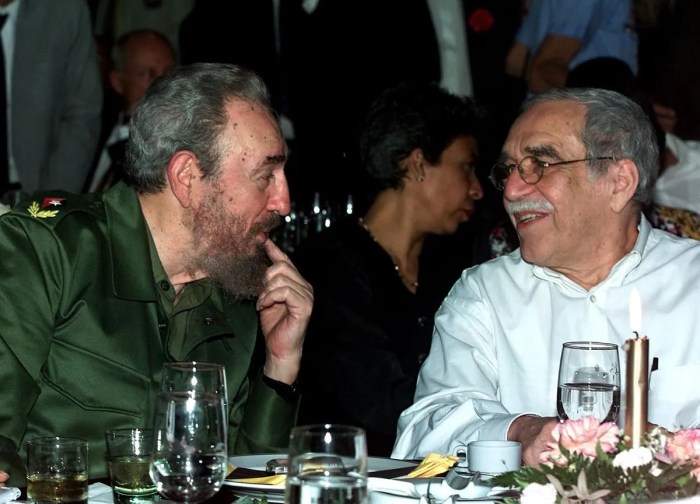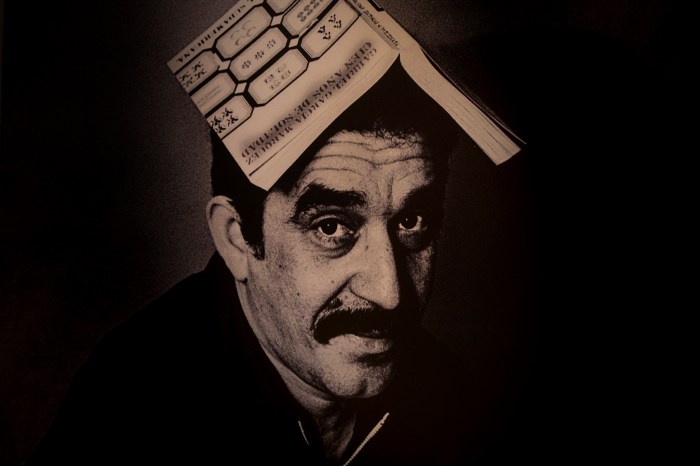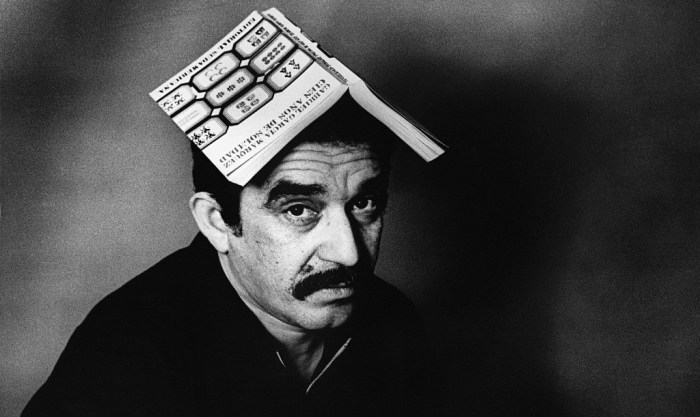Gabriel garcÃa márquez flag of heritage – Gabriel García Márquez’s profound influence on Hispanic literature and beyond has left an enduring mark on the literary world, earning him the title of “Flag of Heritage” in the realm of storytelling. His groundbreaking works, infused with magical realism and incisive social commentary, have captivated generations of readers, cementing his status as a literary icon.
From his exploration of identity and the human condition to his critique of societal norms and political injustices, García Márquez’s writing has transcended cultural boundaries, resonating with audiences worldwide. His legacy as a Nobel laureate further solidifies his position as a literary giant, inspiring and influencing countless writers and readers alike.
Gabriel García Márquez’s Influence on Hispanic Literature
Gabriel García Márquez, a Colombian novelist and Nobel laureate, has had a profound impact on the development of Hispanic literature. His unique writing style, characterized by magical realism, has inspired and influenced generations of writers.
García Márquez’s Writing Style, Gabriel garcÃa márquez flag of heritage
García Márquez’s writing style is characterized by its use of magical realism, a literary technique that blends realistic and fantastical elements. This technique allows him to explore complex themes and emotions in a way that is both engaging and thought-provoking.
García Márquez’s use of magical realism has influenced other Hispanic writers, such as Isabel Allende and Laura Esquivel. These writers have adopted his techniques to create their own unique literary styles.
The “Boom” in Latin American Literature
García Márquez’s works have been instrumental in the “boom” in Latin American literature. This literary movement, which occurred in the 1960s and 1970s, saw a surge in the popularity of Latin American writers and their works.
García Márquez’s novel “One Hundred Years of Solitude” is considered one of the masterpieces of the “boom” period. This novel, which tells the story of the Buendía family over seven generations, has been translated into more than 30 languages and has sold over 50 million copies worldwide.
García Márquez’s Use of Magical Realism

Definition and Description of Magical Realism
Magical realism is a literary technique that blends realistic and fantastical elements. It allows writers to explore complex themes and emotions in a way that is both engaging and thought-provoking.
García Márquez’s Incorporation of Magical Realism
García Márquez incorporates magical realism into his works in a variety of ways. In “One Hundred Years of Solitude,” for example, he uses magical realism to create a world in which the laws of nature are suspended and the characters are able to experience extraordinary events.
García Márquez’s use of magical realism has been praised by critics for its ability to create a sense of wonder and enchantment. It also allows him to explore complex themes, such as the nature of reality and the human condition.
García Márquez’s Exploration of Identity

García Márquez’s works often explore themes of identity. His characters often struggle with their own sense of who they are and where they belong.
Characters Who Struggle with Identity
In “One Hundred Years of Solitude,” the character of Aureliano Buendía struggles with his own sense of identity. He is constantly searching for his place in the world and trying to understand his own motivations.
García Márquez’s exploration of identity is often linked to his own experiences as a Colombian. He was born in a small town in Colombia and later moved to Mexico City. This experience of living in two different cultures gave him a unique perspective on the nature of identity.
García Márquez’s Political and Social Commentary: Gabriel GarcÃa Márquez Flag Of Heritage

García Márquez’s works often contain political and social commentary. He uses his writing to critique societal norms and injustices.
Political and Social Issues
García Márquez addresses a variety of political and social issues in his works, including poverty, inequality, and violence. In “One Hundred Years of Solitude,” he depicts the effects of the Colombian Civil War on the lives of ordinary people.
García Márquez’s political and social commentary has been praised by critics for its honesty and insight. He is considered one of the most important voices in Latin American literature.
García Márquez’s Legacy as a Nobel Laureate

García Márquez was awarded the Nobel Prize in Literature in 1982. This award is considered one of the most prestigious in the world and is given to authors who have made significant contributions to the field of literature.
Significance of the Nobel Prize
The Nobel Prize in Literature is a significant honor that has helped to solidify García Márquez’s reputation as one of the most important writers of the 20th century.
The award has also helped to raise awareness of Latin American literature and has inspired a new generation of writers to pursue their own literary dreams.
Answers to Common Questions
What is the significance of Gabriel García Márquez’s use of magical realism?
Magical realism, a literary technique that blends fantastical elements with everyday reality, allows García Márquez to explore the complexities of human experience and the often-surreal nature of life in Latin America.
How does García Márquez’s writing address political and social issues?
García Márquez uses his writing to critique societal injustices, political corruption, and the impact of historical events on individuals and communities, often drawing inspiration from his own experiences in Colombia.
What is the impact of García Márquez’s Nobel Prize in Literature?
The Nobel Prize has solidified García Márquez’s status as a literary giant, bringing international recognition to his work and inspiring aspiring writers around the world.

